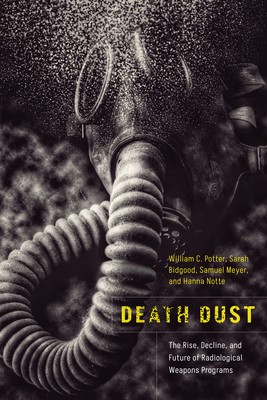
- We will send in 10–14 business days.
- Author: William C Potter
- Publisher: Stanford University Press
- ISBN-10: 1503637654
- ISBN-13: 9781503637658
- Format: 14.7 x 22.6 x 1.8 cm, minkšti viršeliai
- Language: English
- SAVE -10% with code: EXTRA
Reviews
Description
The postwar period saw increased interest in the idea of relatively easy-to-manufacture but devastatingly lethal radiological munitions whose use would not discriminate between civilian and military targets. Death Dust explores the largely unknown history of the development of radiological weapons (RW)--weapons designed to disperse radioactive material without a nuclear detonation--through a series of comparative case studies across the United States, the Soviet Union, the United Kingdom, Iraq, and Egypt. The authors illuminate the historical drivers of and impediments to radiological weapons innovation. They also examine how new, dire geopolitical events--such as the war in Ukraine--could encourage other states to pursue RW and analyze the impact of the spread of such weapons on nuclear deterrence and the nonproliferation regime. Death Dust presents practical, necessary steps to reduce the likelihood of a resurgence of interest in and pursuit of radiological weapons by state actors.
EXTRA 10 % discount with code: EXTRA
The promotion ends in 21d.19:22:48
The discount code is valid when purchasing from 10 €. Discounts do not stack.
- Author: William C Potter
- Publisher: Stanford University Press
- ISBN-10: 1503637654
- ISBN-13: 9781503637658
- Format: 14.7 x 22.6 x 1.8 cm, minkšti viršeliai
- Language: English English
The postwar period saw increased interest in the idea of relatively easy-to-manufacture but devastatingly lethal radiological munitions whose use would not discriminate between civilian and military targets. Death Dust explores the largely unknown history of the development of radiological weapons (RW)--weapons designed to disperse radioactive material without a nuclear detonation--through a series of comparative case studies across the United States, the Soviet Union, the United Kingdom, Iraq, and Egypt. The authors illuminate the historical drivers of and impediments to radiological weapons innovation. They also examine how new, dire geopolitical events--such as the war in Ukraine--could encourage other states to pursue RW and analyze the impact of the spread of such weapons on nuclear deterrence and the nonproliferation regime. Death Dust presents practical, necessary steps to reduce the likelihood of a resurgence of interest in and pursuit of radiological weapons by state actors.


Reviews